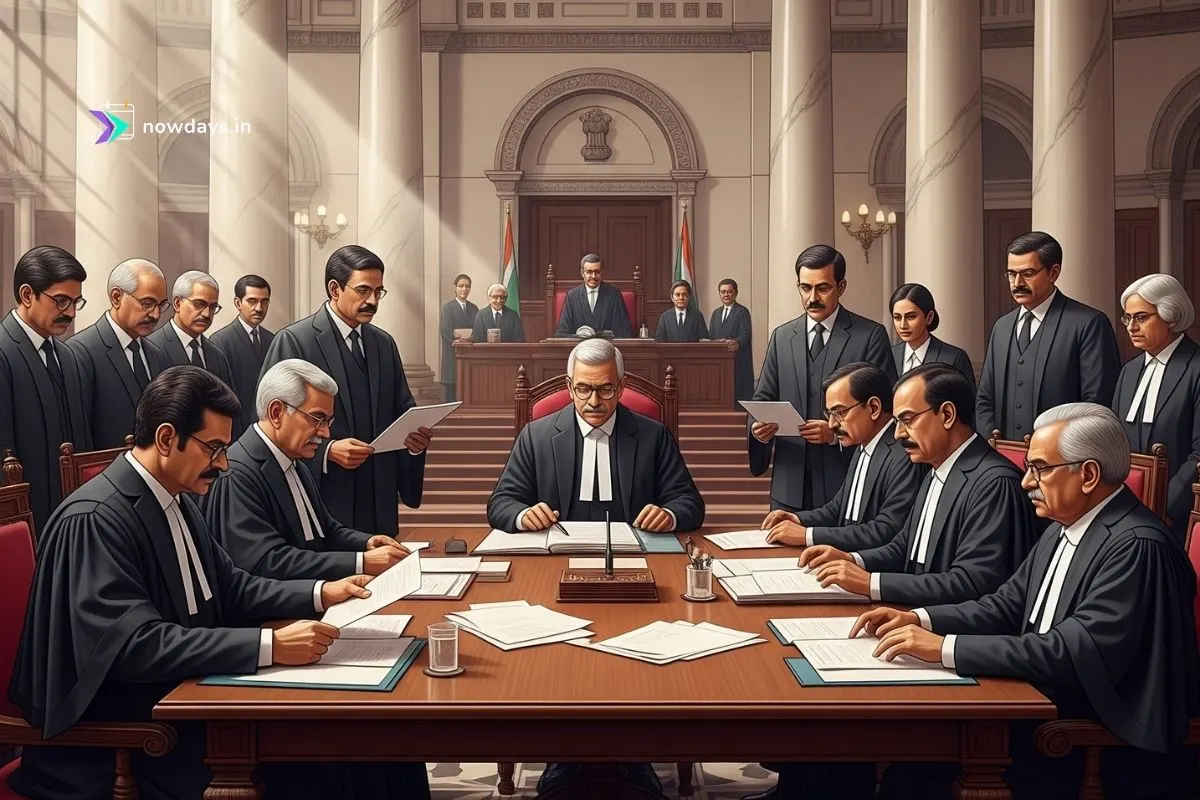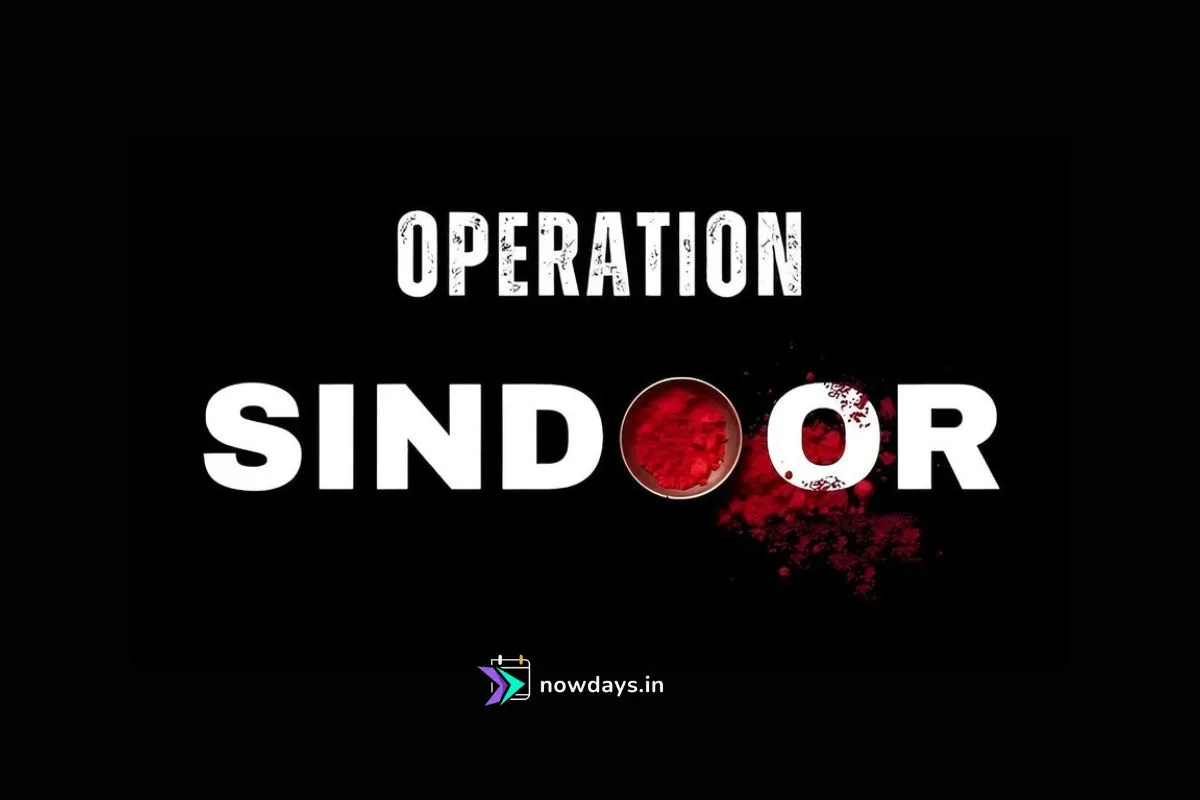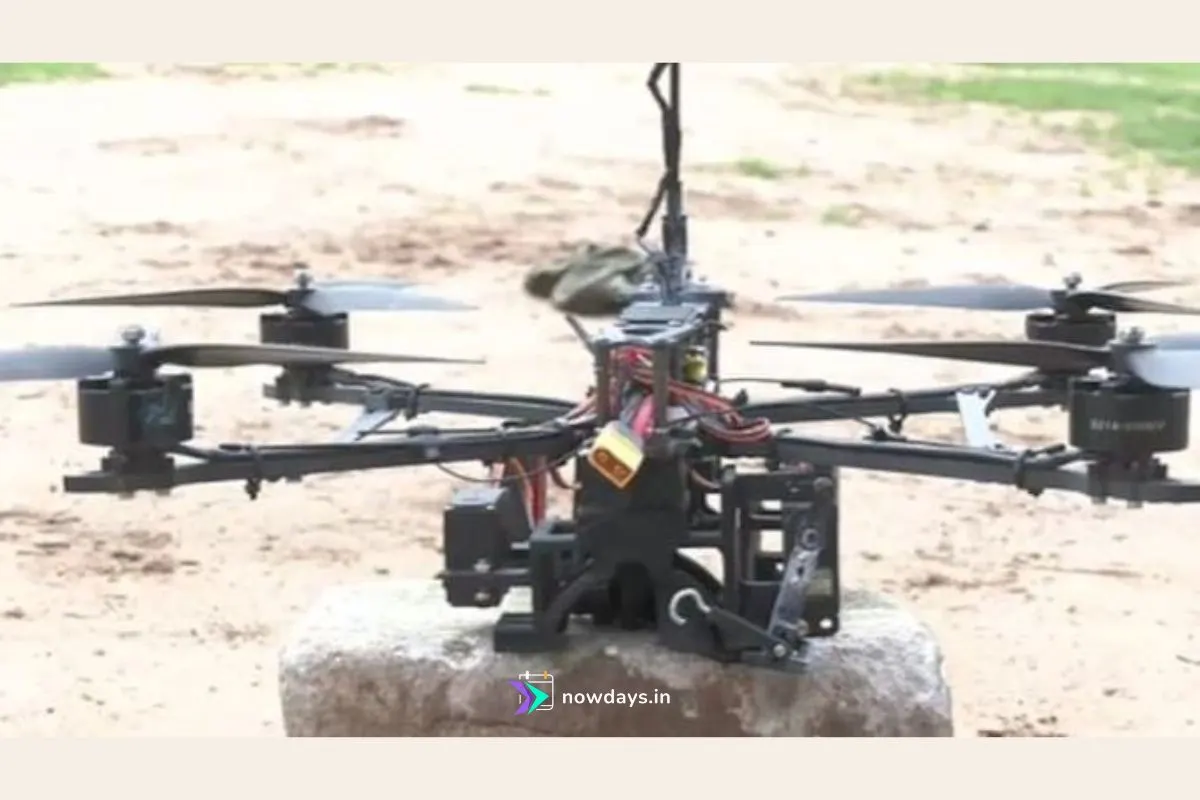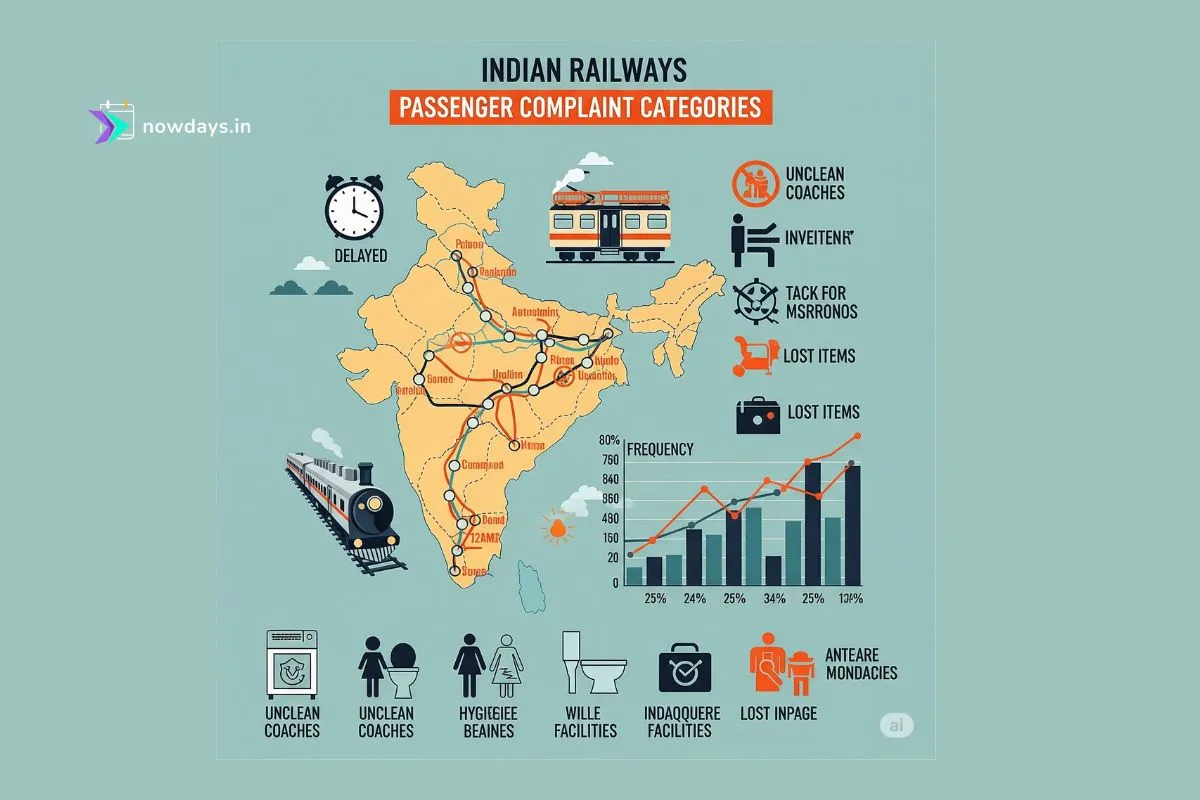The integrity and independence of the judiciary are cornerstones of a democratic system, essential for upholding the rule of law and maintaining public confidence. In India, the Supreme Court has developed an internal mechanism to address allegations of misconduct against its judges and those of the High Courts, distinct from the constitutional process of impeachment. This report delves into the functioning of this in-house inquiry system, examining its origins, procedures, effectiveness, and the criticisms it faces, particularly in light of recent high-profile cases.
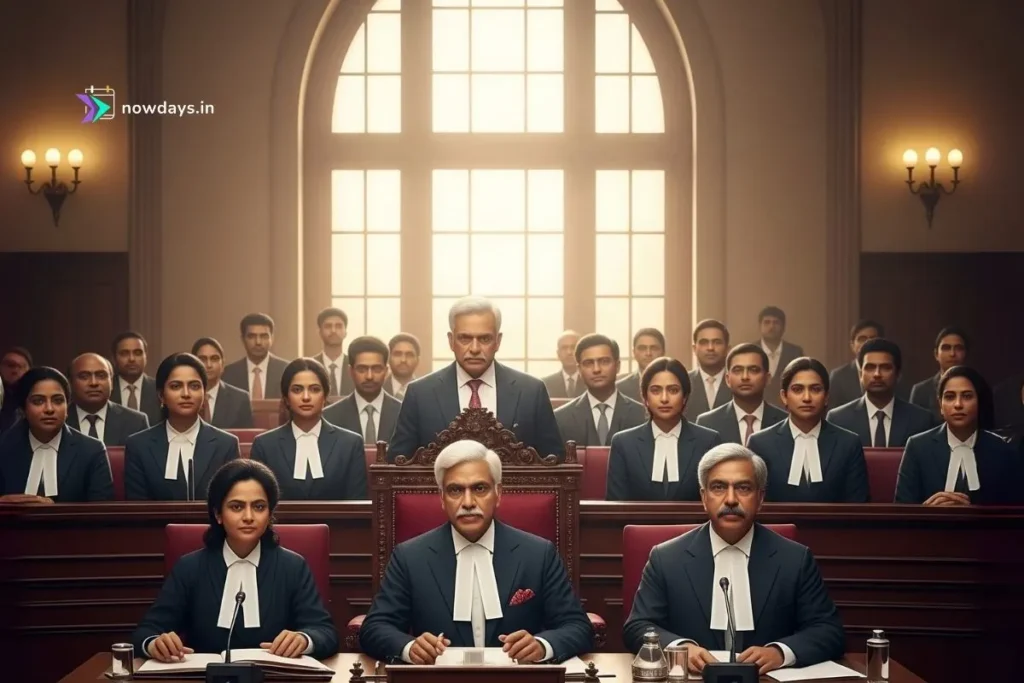
Clarifying the “Justice Varma” Reference
The query regarding “Justice Varma” necessitates a crucial distinction between two prominent legal figures in India, both of whom have significantly impacted the discourse on justice and accountability.
Firstly, Justice J.S. Varma was an eminent jurist and served as the 27th Chief Justice of India from March 1997 to January 1998. He was widely respected for his profound knowledge of constitutional law, unwavering commitment to human rights, and judicial integrity. His legacy includes landmark judgments such as
Vishaka v. State of Rajasthan, which established guidelines against sexual harassment at the workplace, reading the constitutional right to life and gender equality to include the right to work with human dignity. In 2012, he chaired the Justice J.S. Varma Committee, formed in response to a brutal gang-rape incident in Delhi. This committee proposed extensive amendments to criminal law to enhance the safety and security of women, recommending measures like criminalizing voyeurism and stalking, amending rape laws to include non-consensual non-penetrative sexual contact, removing the exception for marital rape, and introducing police and electoral reforms. His work primarily focused on substantive legal reforms and the protection of fundamental rights.
Read more: Justice Varma’s Storeroom Held ₹15 Crore in Cash, Claim SC Panel – No Records to Justify
Secondly, the contemporary context of judicial misconduct and the in-house inquiry system frequently references Justice Yashwant Varma, a sitting High Court judge. He has recently been at the center of a controversy involving allegations of charred currency notes discovered at his official residence, which triggered an in-house inquiry by the Supreme Court. This report primarily focuses on the Supreme Court’s in-house inquiry system as it applies to cases of alleged judicial misconduct, with the situation involving Justice Yashwant Varma serving as a recent illustration of its application and the associated challenges.
Overview of the Need for Judicial Accountability Mechanisms
The judiciary, as a vital pillar of democratic governance, functions on the bedrock of public trust and confidence. To uphold this trust, robust mechanisms are indispensable for ensuring judicial integrity and accountability. The concept of judicial independence, while paramount to ensure judges can decide cases without fear or favor, must be carefully balanced with the imperative of accountability. Concerns regarding judicial corruption and a perceived lack of accountability have been raised by various stakeholders, including former Supreme Court judges, who have pointed to a “systemic deficit” in addressing such issues.
The maintenance of public faith in the judiciary necessitates a transparent and effective system for addressing misconduct. However, a significant challenge arises in balancing judicial independence with accountability. The establishment of an in-house mechanism, while conceived to preserve judicial independence through self-regulation , can inadvertently undermine public trust if its operations are perceived as opaque or ineffective. The internal and confidential nature of the in-house inquiry, with reports often kept from public view, leads to criticisms of its lack of transparency.
This creates a situation where the mechanism designed to protect independence by keeping matters internal inadvertently fosters public suspicion and criticism. The public may perceive that the judiciary is shielding its own, suggesting that while independence is a constitutional value, its pursuit through a non-transparent internal process can inadvertently erode the very public faith it aims to maintain. This highlights a fundamental challenge in achieving an appropriate equilibrium between these two critical principles.
The Supreme Court’s In-House Inquiry System: Genesis and Legal Basis
The Supreme Court of India formally introduced its in-house inquiry procedure in 1999. This self-regulatory mechanism emerged from a critical need identified in the 1995
C. Ravichandran Iyer v. Justice A.M. Bhattacharjee case. This landmark case brought to light a significant void in the existing legal framework: the absence of a clear mechanism to address judicial misconduct that fell below the stringent threshold required for parliamentary impeachment under Articles 124 and 218 of the Constitution.
To address this “yawning gap”, a five-member committee was constituted in 1997, which subsequently devised the internal procedure for handling allegations of misconduct against judges. The recommendations of this committee were formally adopted by a Full Court Resolution in 1999. The procedural framework was further reaffirmed and elaborated upon in the 2014 case of
Additional District and Sessions Judge ‘X’ vs Registrar General, Madhya Pradesh HC.
Constitutional Context and the “Gap” it Addresses
The Indian Constitution provides a specific, albeit arduous, process for the removal of Supreme Court and High Court judges. Article 124(4) and Article 218 stipulate that a judge can only be removed from office on grounds of “proved misbehaviour or incapacity” through a parliamentary impeachment process. This process requires a motion to be passed by a special majority in both the Lok Sabha and Rajya Sabha, meaning a two-thirds majority of members present and voting, and more than 50% of the total membership of each House.8 If Parliament approves, the President issues the final removal order.
The in-house inquiry system was thus conceived to address a category of judicial misconduct that, while serious enough to warrant internal action, might not meet the high constitutional bar for impeachment. This mechanism was intended to fill the void for conduct inconsistent with judicial office but falling below the impeachment threshold.
Read more: Jagdeep Dhankhar’s Tenure: Who Could Be India’s Next Vice President?
The in-house procedure, adopted via a Full Court Resolution, operates as an administrative mechanism rather than one explicitly rooted in the Constitution or a specific statute. This creates a situation where it is criticized for being an “extra-constitutional mechanism” that lacks explicit “constitutional premise or legal sanctity”. The absence of constitutional or statutory backing means that its recommendations, particularly those suggesting removal, cannot directly lead to a judge’s removal without recourse to the mandatory parliamentary framework under Articles 124 and 218. The Vice-President’s public assertion that such a procedure “will be inconsequential” underscores this fundamental vulnerability. This implies that while the judiciary aims to manage its internal affairs through self-regulation, its self-imposed mechanism may lack the necessary legal authority to enforce serious outcomes, thereby still relying on the very parliamentary process it sought to address for lesser misconduct. This highlights a fundamental limitation in the IHI’s ability to effectuate the most severe disciplinary actions independently.
Operational Mechanism of the In-House Inquiry
The Supreme Court’s in-house inquiry system follows a structured, albeit internal, process to investigate allegations of judicial misconduct.
The process commences when a complaint against a judge is received. Such complaints can originate from various sources, including the Chief Justice of India (CJI), the Chief Justice of a High Court, or even the President of India. If the complaint is initially lodged with a High Court Chief Justice or the President, it is subsequently forwarded to the CJI for further examination. The CJI undertakes a preliminary review of the complaint. At this initial stage, if the complaint is found to be baseless or lacking credibility, the CJI has the authority to dismiss it, thereby concluding the matter without a full inquiry.
Constitution and Composition of the Three-Member Inquiry Committee
Should the CJI determine that a detailed investigation is warranted, a three-member inquiry committee is constituted. The composition of this committee is specific: it typically comprises two Chief Justices of High Courts and one High Court judge. This structure is intended to ensure a level of peer review and expertise in assessing the allegations.
Conduct of the Inquiry, Adherence to Natural Justice, and Report Submission
The three-member committee is tasked with conducting a thorough investigation into the allegations. Throughout this process, the committee is expected to adhere strictly to the principles of natural justice. This includes providing the accused judge with a reasonable opportunity to present their defense, respond to charges, and have their say. The committee retains the flexibility to devise its own specific procedures for conducting the inquiry, provided these procedures remain consistent with the overarching principles of natural justice. Upon completion of its investigation, the committee prepares a final report, which is then submitted to the CJI. This report must clearly state whether the allegations against the judge have been substantiated and, if so, whether they are serious enough to warrant a recommendation for removal.
Read more: A Silent Protest? Vice President Dhankhar’s Resignation Questions BJP’s Grip on Power
Actions Taken by the CJI Based on Inquiry Findings
Based on the findings presented in the inquiry committee’s report, the CJI takes further action, which is tiered according to the gravity of the misconduct established:
- No Substance: If the inquiry report concludes that the allegations lack substance or are unsubstantiated, the case is closed, and no further action is taken against the judge.
- Minor Misconduct: In instances where minor misconduct is established, the CJI may issue a warning or offer advice to the concerned judge. The report detailing such findings is kept confidential but is formally placed on record. Examples of conduct that might fall under minor misconduct include rude, abusive, or improper treatment of lawyers, litigants, or court staff; delays in decision-making; or engaging in improper communications.
- Serious Misconduct: If the inquiry establishes serious misconduct, the judge is typically asked to resign or opt for voluntary retirement. This step aims to facilitate a graceful exit for the judge while addressing the serious nature of the findings.
- Refusal to Resign: Should the judge refuse to resign or retire voluntarily, the CJI has the authority to instruct the Chief Justice of the concerned High Court not to assign any further judicial work to the judge. This effectively removes the judge from active judicial duties.
- Recommendation for Impeachment: In cases where serious misconduct is established and the judge refuses to step down, or if the gravity of the misconduct warrants it, the matter may escalate. The CJI may then recommend the initiation of formal impeachment proceedings under the constitutional provisions to the President and the Prime Minister.
The system’s reliance on a judge’s cooperation for resignation or retirement represents a significant point of weakness. When a judge chooses not to cooperate with the inquiry’s conclusions, the CJI’s direct recourse is limited to relieving them of judicial duties and subsequently recommending impeachment. This creates a situation where the impression might be conveyed that the removal is sought primarily due to “non-cooperation” rather than the underlying misconduct that prompted the inquiry. This dynamic potentially obscures the true reasons for action and can undermine the perceived effectiveness of the in-house inquiry in achieving genuine accountability for the actual offense.
Distinction from Constitutional Impeachment
The Supreme Court’s in-house inquiry mechanism and the constitutional process of impeachment represent two distinct avenues for addressing judicial conduct in India. While both aim to uphold judicial integrity, they differ significantly in their legal basis, scope, procedure, and outcomes. Understanding these differences is crucial for appreciating the role and limitations of the in-house system within the broader framework of judicial accountability.
The in-house inquiry is an internal, administrative procedure devised by the Supreme Court itself through a resolution. It is designed to handle instances of judicial misconduct that fall below the high threshold of “proved misbehaviour or incapacity” required for impeachment. In contrast, constitutional impeachment is a formal, parliamentary process explicitly provided for in the Constitution (Articles 124(4) and 218) for the removal of judges for “proved misbehaviour or incapacity.”
The following table provides a clear comparison of these two mechanisms:
| Aspect | In-House Inquiry Mechanism | Constitutional Impeachment |
| Basis | Supreme Court resolutions (1999) | Article 124(4) (SC judge) & 218 (HC judge) of the Constitution |
| Applicability | Judicial misconduct below impeachment threshold | Only for “proved misbehaviour or incapacity” |
| Initiated by | CJI, High Court Chief Justice, or President | Members of Parliament |
| Process Type | Internal, confidential judicial mechanism | Parliamentary and public process |
| Committee Comp. | Two HC Chief Justices and one HC judge | Supreme Court judge, High Court Chief Justice, and a distinguished jurist (under Judges (Inquiry) Act, 1968) |
| Outcome | Advice, warning, or recommendation for resignation/retirement | Removal from office by Presidential order 9 |
| Role of Parliament | No direct involvement | Requires 2/3rd majority in both Houses |
| Transparency | Confidential process to protect judicial dignity | Public and media-visible process |
| Final Authority | Chief Justice of India (for internal actions) | President of India (on PM’s advice after Parliament vote) |
This comparison highlights the fundamental differences between the two processes. The in-house inquiry serves as a preliminary or less severe disciplinary tool, designed for internal resolution of misconduct that does not reach the constitutional threshold for removal. Its confidential nature is intended to protect judicial dignity, but this also contributes to criticisms regarding its transparency. In contrast, impeachment is the ultimate, public removal process, requiring parliamentary approval and a presidential order. The in-house inquiry, therefore, functions as a mechanism for internal discipline and management of judicial conduct, distinct from the formal constitutional procedure for removal from office. Without this clear differentiation, the in-house inquiry’s role might be misunderstood as a direct removal mechanism, which it is not for serious misconduct.
Effectiveness, Transparency, and Criticisms
Despite its foundational role in addressing judicial misconduct, the Supreme Court’s in-house inquiry system has consistently faced scrutiny regarding its effectiveness, transparency, and inherent limitations.
Analysis of the System’s Intended Objectives Versus Actual Outcomes
The in-house procedure was established with the dual objectives of filling a critical accountability gap for misconduct below the impeachment threshold and maintaining public faith in the judiciary. However, a review of its operational history suggests that “over the years, the in-house procedure has not seemed to have achieved its intended objectives”. A primary challenge lies in its inability to compel action. The procedure has “typically failed to convince judges to resign or seek voluntary retirement if it is found that their misconduct is serious enough to warrant removal”. This reliance on voluntary compliance for serious findings significantly limits its punitive power and often necessitates escalation to the more cumbersome parliamentary impeachment process, which the in-house inquiry was, in part, designed to mitigate.
Issues of Opacity, Confidentiality of Reports, and Lack of Public Disclosure
A pervasive criticism leveled against the in-house inquiry system concerns its inherent opacity and the strict confidentiality surrounding its proceedings and reports. Reports generated by these inquiries are consistently kept confidential. The Supreme Court has, on multiple occasions, including a 2014 judgment, dismissed pleas to make these in-house inquiry reports public. This steadfast commitment to confidentiality, while perhaps intended to protect judicial dignity and independence, leads to significant criticisms of “opacity” and a “seeming lack of transparency”.
The persistent confidentiality of in-house inquiry reports, even when dealing with allegations of serious misconduct, directly contributes to a perception of institutional bias and a lack of genuine accountability. This opacity, intended to protect judicial dignity, ironically erodes public trust by creating an impression that the judiciary is shielding its own. This undermines the very integrity it seeks to uphold. The absence of public scrutiny over the basis of decisions or the extent of accountability creates a disconnect between the judiciary’s internal processes and external expectations of transparency and fairness, ultimately diminishing public confidence in the system’s ability to self-regulate effectively.
Challenges Related to Judicial Cooperation and Perceived Conflict of Interest
The effectiveness of the in-house inquiry is further hampered by the challenges of judicial cooperation. Experience has shown that judges have been “unwilling to cooperate with the process or its conclusions”. This non-cooperation can stall or dilute the intended disciplinary outcomes.
Furthermore, a significant structural criticism pertains to a perceived “conflict of interest” within the system. When the CJI, having overseen the in-house inquiry and potentially formed an opinion on a judge’s misconduct, is then called upon to recommend a sitting judge for a parliamentary inquiry committee (as per the Judges (Inquiry) Act, 1968), it raises concerns. This sequential involvement can lead to questions about the “presumption of the judge’s neutrality and objectivity” in the subsequent, more formal process. The CJI’s prior involvement in the in-house process could be seen as influencing the selection of the parliamentary committee members, thus compromising the impartiality of the overall accountability mechanism.
Notable Cases and Their Outcomes
Several high-profile cases have illustrated the limitations and controversies surrounding the in-house inquiry system:
- Karnataka High Court Judges (2003): An in-house committee exonerated three Karnataka High Court judges who were implicated in a sex scandal. Subsequently, the Supreme Court dismissed a plea seeking public disclosure of this inquiry report, reinforcing the system’s confidentiality.
- Justice A.K. Ganguly: An in-house committee found substance in allegations of sexual harassment against Justice A.K. Ganguly. However, since he had already retired from service, the matter concluded without further formal action. This highlights the system’s limited reach over retired judges.
- Justice Gangele: In Justice Gangele’s case, an in-house committee initially provided him with a clean chit. Interestingly, an independent parliamentary inquiry committee, formed later, explicitly resolved not to be influenced by the in-house committee’s findings. This parliamentary committee conducted its own investigation and ultimately reached the same conclusion of exoneration. This instance underscores the non-binding nature of the in-house inquiry’s findings on a formal parliamentary process.
- Former CJI Ranjan Gogoi (2019): Perhaps one of the most infamous cases, the in-house committee investigating sexual harassment charges against former Chief Justice of India Ranjan Gogoi gave him a clean chit. Crucially, the committee’s report was withheld from both the complainant and the public. This outcome elicited “mixed reactions,” with some critics labeling it an instance of “institutional bias”, further intensifying calls for greater transparency and external oversight.
These cases collectively demonstrate the in-house inquiry’s limitations, particularly its inability to compel action and its consistent practice of confidentiality, which has drawn significant public and legal criticism.
The Case of Justice Yashwant Varma: A Recent Illustration
The recent controversy involving Justice Yashwant Varma of the Delhi High Court provides a contemporary and vivid illustration of the Supreme Court’s in-house inquiry system in action, simultaneously highlighting its procedural complexities and the ongoing debates surrounding its legal standing and effectiveness.
Allegations and the Inquiry Process
The controversy originated on March 14, when a fire broke out at the outhouse of Justice Yashwant Varma’s official residence in Delhi. During the firefighting efforts, charred currency notes were reportedly discovered stuffed in sacks. This incident prompted the then Chief Justice of the Delhi High Court to flag the matter to the Chief Justice of India (CJI). In response, the CJI initiated an in-house inquiry, constituting a three-member panel to conduct a “deeper investigation into the incident”.
Findings and Subsequent Actions
The inquiry committee, after its investigation, produced a 64-page report. This report concluded that while there was no direct evidence linking Justice Varma to the stash of money, there was “strong inferential evidence” suggesting his “covert or active control” over the burnt cash. The committee determined that Justice Varma’s conduct “belied the trust” reposed in a constitutional court judge and amounted to “serious judicial misconduct warranting impeachment”. The report further stated that once the presence of burnt cash in his storeroom was established, the “burden shifted upon Justice Varma to account for the money by giving a plausible explanation, which he failed to do, except projecting a flat denial and raising a bald plea of conspiracy”.
Following these findings, Justice Varma was advised by then CJI Khanna to either resign from his position or opt for voluntary retirement. However, Justice Varma refused this advice, asserting that stepping down would amount to accepting a “fundamentally unjust” process. In the wake of his refusal and the inquiry’s findings, he was divested of his judicial work and subsequently transferred to his parent high court in Allahabad.
Public and Legal Discourse Surrounding the Case
The Justice Yashwant Varma case has generated significant public and legal discourse, reigniting long-standing debates about judicial accountability. Justice Varma himself moved the Supreme Court, challenging the inquiry panel’s report and seeking its invalidation. His plea contended that the report was prepared “without due process and inadequate,” arguing that the in-house procedure unjustifiably extended beyond its intended scope of self-regulation to recommend removal, thereby creating a “parallel, extra-constitutional mechanism”. He specifically argued that the inquiry reversed the burden of proof, requiring him, the accused, to disprove the charges against him.
Justice Varma’s challenge, particularly his argument that the inquiry “reversed the burden of proof”, raises significant questions about the procedural fairness of the in-house inquiry, even though it is supposed to adhere to natural justice principles. This implies that a self-devised procedure, while offering flexibility, may not always meet the rigorous standards of due process expected when a judge’s constitutional tenure and reputation are at stake. The contradiction between the inquiry’s finding that the burden shifted to the judge and the general legal principle that the burden of proof lies with the accuser highlights a potential procedural flaw in the self-regulatory mechanism.
The implication is that while the in-house inquiry aims for fairness, its internal, non-statutory nature may lead to interpretations or applications of due process that are challenged as inadequate, especially when the stakes involve a recommendation for impeachment. This underscores the inherent tension between the judiciary’s desire for self-governance and the public expectation of rigorous, legally sound accountability processes.
Adding to the public discourse, Vice-President Jagdeep Dhankar publicly stated that the Supreme Court’s in-house inquiry procedure “does not have any constitutional premise or legal sanctity but most importantly it will be inconsequential”. This high-profile comment further underscored the contested legal standing of the in-house system. The case has “reignited an old flame” regarding the need for a more robust judicial accountability commission. It has also brought to the forefront the apprehension among the public that judges might “get away” with misconduct in situations where other public servants would face more severe and transparent consequences.
Broader Discourse on Judicial Accountability and Reforms
The limitations and criticisms surrounding the Supreme Court’s in-house inquiry system are part of a broader and long-standing discourse in India concerning judicial accountability and the imperative for comprehensive reforms.
Calls for a Judicial Standards and Accountability Law/Commission
There is a strong and “longstanding problem” regarding judicial accountability in India, which has led to persistent calls for a more robust and legally mandated framework. Legal experts, civil society organizations, and even former judges advocate for the enactment of a Judicial Standards and Accountability law. A version of such a bill was passed by the Lok Sabha in 2012 but subsequently lapsed, indicating a historical recognition of this need.
Proponents argue that such a statutory body would be empowered to handle inquiries into judicial misconduct, issue advisories and warnings for less serious misbehavior, and initiate impeachment proceedings for grave cases. The establishment of such a commission is seen as a crucial step to dispel public doubts that the judiciary always seeks to protect its own, thereby enhancing transparency and public confidence in the accountability process. It aims to ensure that if a judge is found guilty, appropriate proceedings ensue swiftly, and if innocent, the reasons for such allegations are also thoroughly investigated.
Debates Surrounding the National Judicial Appointments Commission (NJAC) and its Relevance to Accountability
The debate surrounding the National Judicial Appointments Commission (NJAC), which briefly emerged in 2015, is intrinsically linked to the broader discourse on judicial accountability. While primarily focused on the appointment and transfer of judges, the NJAC was viewed by some as a potential “antidote to the culture of opacity that pervades judicial functioning”. The Supreme Court, however, struck down the NJAC, upholding the collegium system for judicial appointments.
The criticism of the collegium system’s “opacity” and “dubious appointments” suggests that a lack of transparency at the entry point (appointments) can directly impact the quality and integrity of the judiciary, subsequently affecting the need for and effectiveness of misconduct mechanisms. Justice Chelameswar, in his dissenting opinion in the NJAC case, sharply criticized the collegium system as “opaque and inaccessible” and noted “allegations of seriously unworthy appointments”. This implies that the initial selection process can contribute to the very problems of misconduct and lack of accountability that the in-house inquiry attempts to address. This situation suggests that addressing accountability solely through post-appointment misconduct mechanisms like the in-house inquiry may be insufficient if the appointment process itself lacks transparency and rigor. Therefore, a holistic approach to judicial accountability must encompass both the appointment process (as envisioned by NJAC proponents) and the post-appointment conduct mechanisms (like a Judicial Standards and Accountability law), as these two aspects are interdependent in ensuring the overall integrity and public trust in the judiciary.
Ethical Considerations and Codes of Conduct for Judges
A robust ethical framework and a clear code of conduct are foundational to judicial integrity. Codes of judicial ethics in India and globally address a wide spectrum of behavior, encompassing conduct in the courtroom, professional activities, and even a judge’s private life. Judges are expected to uphold the independence, integrity, and impartiality of the judiciary, and to scrupulously avoid any impropriety or even the appearance of impropriety.
These ethical guidelines mandate that judges refrain from memberships or associations that could give an appearance of bias or call their independence into question. They are also expected to avoid deriving any personal benefit from their judicial position and to maintain a distance from political causes, parties, or offices. Furthermore, there are constraints on judicial speech, prohibiting public statements about pending or impending cases or remarks that might suggest prejudice against individuals or groups. Misconduct, in this context, can range from falsification of facts and using judicial office for special treatment of friends or relatives to accepting bribes.
While detailed codes of conduct and ethical guidelines exist , the recurring issues of judicial misconduct and the persistent public concerns about accountability suggest a significant gap in their effective enforcement. The in-house inquiry, as the primary internal enforcement mechanism, has been criticized for its inability to consistently compel adherence to these standards or impose proportionate measures short of impeachment. This implies that without a truly robust, transparent, and enforceable accountability system, the ethical guidelines, no matter how well-articulated, remain aspirational rather than consistently enforced. The judiciary’s internal mechanisms, while setting high standards, struggle to bridge the gap between prescribed ethics and actual accountability, thereby indicating a need for external legislative intervention to reinforce these ethical principles.
Recommendations for Strengthening the In-House Inquiry System
To address the inherent limitations and criticisms of the Supreme Court’s in-house inquiry system and to bolster public trust in judicial accountability, several reforms are imperative.
Proposals for Enhanced Transparency and Accountability
The current system’s “opacity” is a significant impediment to public confidence. While complete public disclosure of all inquiry reports might be debated due to concerns about judicial dignity, there should be clearer and more consistent guidelines for public statements regarding cases of serious misconduct. This could involve publishing redacted versions of reports or providing comprehensive summaries that outline the allegations, findings, and actions taken, without compromising sensitive personal details. Furthermore, implementing a mechanism for external oversight or review of the in-house inquiry’s procedural fairness, without unduly compromising judicial independence, could significantly enhance its credibility. This external review could focus on adherence to natural justice principles and consistency in applying disciplinary measures.
Suggestions for Clearer Guidelines on Minor Misconduct and Proportionate Measures
The in-house inquiry system needs to explicitly outline a range of “proportionate measures short of initiating removal proceedings” for instances of minor misconduct. This would ensure consistency in application and provide clear expectations for judges. Such measures could include formal advisories, mandatory ethics training, temporary removal from specific judicial duties, or administrative penalties, with predefined criteria for their imposition. Clearly defined minor misconduct categories and corresponding disciplinary actions would lend greater predictability and fairness to the process.
Addressing Perceived Conflicts of Interest
The perceived “conflict of interest” where the CJI recommends a sitting judge for a parliamentary inquiry committee after having presided over the in-house inquiry needs careful consideration. To mitigate this, alternative mechanisms could be explored. For instance, the recommendation for the parliamentary committee could originate from a more diversified body, or the CJI’s role at that stage could be strictly administrative, devoid of evaluative judgment.
The inherent limitations and criticisms of the in-house inquiry, particularly its lack of constitutional or legal sanctity and its struggle to compel cooperation, strongly indicate that a self-regulatory mechanism, however well-intentioned, is insufficient for robust judicial accountability. The persistent calls for a Judicial Standards and Accountability law suggest that legislative backing is crucial. Such a law would provide the necessary legal authority, transparency, and independence from internal judicial structures, ensuring that findings are not “inconsequential” and that accountability is not merely advisory. This transition from a self-regulatory administrative procedure to a legislatively backed framework would provide the necessary legal authority to ensure due process, compel cooperation, and enforce outcomes, thereby effectively balancing judicial independence with robust, legally mandated accountability.
Upholding Judicial Integrity and Public Trust
The Supreme Court of India’s in-house inquiry system plays a critical role in the nation’s judicial landscape, having been established to address a crucial accountability gap for judicial misconduct falling below the impeachment threshold. Its genesis in the C. Ravichandran Iyer case and its formal adoption in 1999 underscore the judiciary’s recognition of the need for internal self-regulation to preserve its integrity and public faith.
However, as highlighted by various cases, including the recent controversy involving Justice Yashwant Varma, the system faces systemic challenges. These include persistent criticisms regarding its opacity, the confidentiality of its reports, and its limited enforceability, particularly when judges are unwilling to cooperate with its findings. The perceived conflict of interest in its operational structure further contributes to questions about its impartiality and effectiveness. The fact that its recommendations for serious misconduct often rely on voluntary resignation or necessitate escalation to the cumbersome constitutional impeachment process underscores its inherent limitations.
The ongoing public and legal discourse strongly advocates for comprehensive judicial reforms. There is a clear imperative for a robust, transparent, and legally mandated accountability framework, potentially through a Judicial Standards and Accountability law. Such a framework would provide the necessary statutory backing to ensure due process, compel adherence to ethical standards, and enforce outcomes effectively. Ultimately, strengthening judicial accountability mechanisms, while carefully preserving judicial independence, is paramount to upholding the integrity of the Indian judiciary and reinforcing the public’s indispensable trust in the administration of justice.
